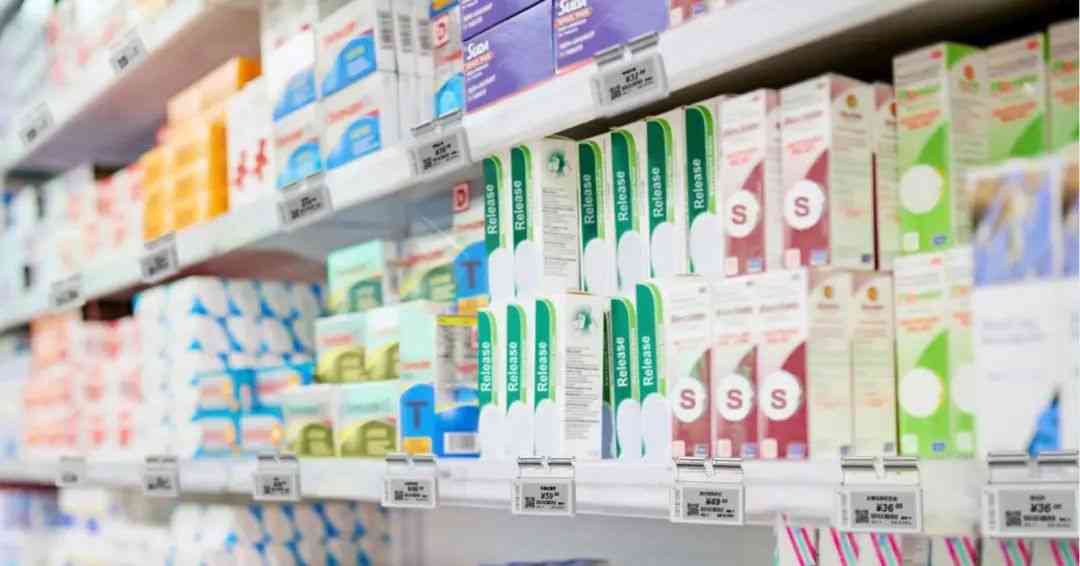It is not difficult to find that many supermarkets and fresh food stores have replaced electronic shelf labels. Electronic shelf labels are not only used in retail, but also in hospital pharmacies for different types of drugs.
Recently, the minewtag smart drug label system was put into use in the inpatient pharmacy of Jinzhou Hospital in Liaoning. With the introduction of smart drug cards, the management efficiency of hospital pharmacies has been greatly improved.

"It used to take a long time to find medicine, and it was easy to send the wrong medicine. Some injections, refrigerated medicines or other medicines with special storage requirements are not easy to preserve." "Now we can get the prescription and prepare the medicine in one minute. Patients don't have to queue up for medicine. The time is much shorter than before, which saves us time." said a pharmacist in the pharmacy of Jinzhou Hospital in Liaoning.
Display of key information of drugs saves costs
The changes that have quietly taken place in the smart pharmacy of Jinzhou Hospital started with rows of neat electronic shelf labels. The electronic tags in the cloud are connected to the drug information system through Bluetooth 5.0 technology. The pharmacy managers use PDA or NFC near-field operation to display the latest drug information on the electronic screen. In the past, once drug information changed, drug labels had to be replaced, which was time-consuming and laborious. Now, as long as you move your hands and reset the release in the system background, the label information can be automatically updated. Compared with traditional paper labels, electronic labels ensure the essence of drug information quality management, save pharmacy operation and maintenance costs, and ensure drug safety.

Three-color flashing lights quickly find drugs to ensure drug safety
Different colors of LED lights can display different management attributes of drugs, such as red for commonly used drugs, blue for high-alert drugs, and green for external drugs, etc., which is convenient for reminding pharmacists to manage. The electronic screen display information supports custom editing and can display the expiration date, batch, etc. of the drug. The electronic label of the drug that is about to expire will automatically light up to remind the pharmacist to replace the drug that is about to expire/expired, which is more conducive to the first-in-first-out management of drugs and ensures drug safety. Since the inpatient pharmacy went online and used electronic tags, it has comprehensively improved the hospital management efficiency and reduced costs.

Smart medical innovation service supply, real-time update of inventory information
Pharmacy has a wide variety of drugs, especially when a large number of new drugs enter the hospital system, the slightest negligence in the warehousing, storage, outbound, and adjustment links can easily cause drug confusion. The Yunliwuli electronic tag system is connected to the hospital HIS system, and the inventory information is updated in real time during drug procurement and allocation, reminding pharmacists to replenish stocks in time, while saving the inventory workload of the pharmacy. Electronic tags can not only directly mark easily confused drug information, but also quickly find related drugs by item number, reducing the error rate of adjustment.
Pharmaceutical companies solve the problem of drug refrigeration
The storage conditions of drugs directly affect the efficacy of drugs, which is a major problem of drug quality. Yunli developed a 2.13” low-temperature electronic tag for low-temperature environments. It has a thinner appearance and lower power consumption. It has an operating temperature of -20℃-50℃ and an IP67 protection level. It can also be used in hospital pharmacy cold storage and frozen medicine facilities. In addition, temperature and humidity sensors are installed in the ward to monitor temperature and humidity in real time to create a comfortable ward environment. Temperature monitoring is carried out in storage places such as pharmacies, medicine refrigerators, and freezers to keep medicines and items in a suitable temperature and humidity environment.

Figure | T/H sensor
To sum up, the "smart medicine card" in the form of an electronic tag helps pharmacies to work intelligently, saves time in picking up medicines, and is more adaptable to diverse management needs and more competitive than traditional pharmacies.











